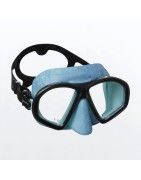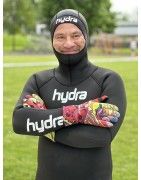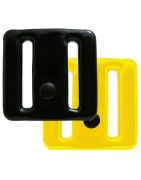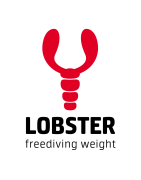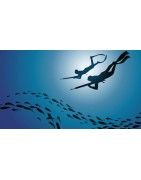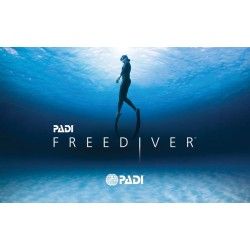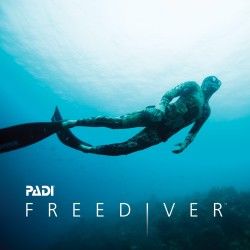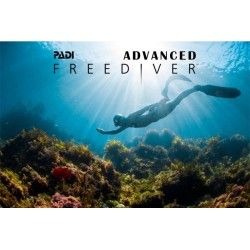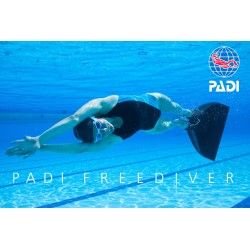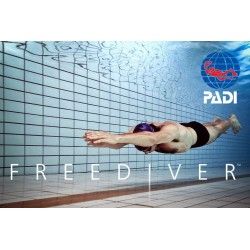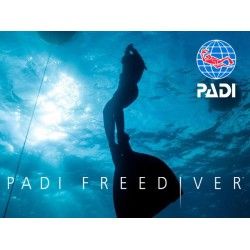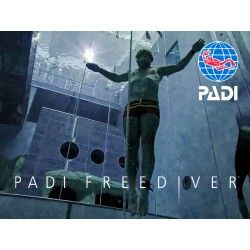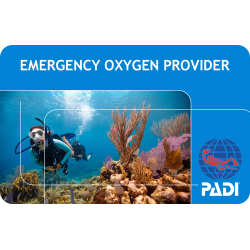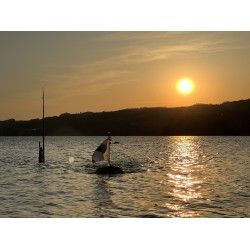Freediving Store Germany
Freediving Equipment Shop. Everything for apnea diving and spearfishing with top brands: Lobster Weight, Octopus, CETMA, and Mares. Online webshop with shipping directly from Switzerland and Germany.
freedive-thurgau the freediving specialist
In addition to equipment for SCUBA diving, some dive shops also sell a few items for freediving. However, the range is usually limited to items from the major manufacturers. With freedive-frauenfeld, I specialise in freediving and you won't find anything in my shop other than equipment that has proven itself for freediving and is among the best in its class. I have been freediving since 2016 and dive 3-4 times a week in indoor pools, lakes, rivers and the sea: I would be happy to advise you!
freedive-konstanz the Freediving Shop for Germany and the EU
Due to the great demand from Germany and the EU for first class products for freedivers, I have set up a second shop under the address www.freedive-konstanz.de and run a warehouse in Konstanz to be able to supply customers outside of Switzerland quickly and easily. Currently, the webshop freedive-konstanz.de only includes a selection of the products that are available at freedive-frauenfeld.ch, but the offer is constantly being expanded.
Offer Freediving Shop
The freediving shop where you can find everything you need for freediving: Fins, freediving wetsuits, freediving gloves, socks, masks, snorkels, freediving weight belts, freediving weights, lanyards, nose clips and other accessories. The apnoea shop has everything an apnoea diver's heart desires. Your webshop for apnoea diving! You can choose everything at your leisure in the online shop or visit me in Felben-Wellhausen come by. Felben-Wellhausen is only 5 minutes from Frauenfeld, 20 minutes from Winterthur and 40 minutes from Zurich. I don't have an actual shop, but you'll find everything you need here and can look at, try out and buy apnoea diving equipment on the spot in a relaxed atmosphere.
Freediving shop and diving school
In my freediving shop you can book freediving courses and find the material and equipment you need for freediving. The articles listed in my freediving shop are material that I know personally, have tried out or dive regularly myself. Although there are suppliers, such as Mares or Cressi, who offer a full range of equipment for freedivers, most freedivers will want to put together the right equipment for them from different suppliers. A suit from Mares may fit you well, but perhaps the fins from Cressi or Seac are better suited to your narrow feet?
What is the best freediving equipment?
My recommendation is that you buy good quality equipment to start with, but not necessarily the equipment used by competition athletes. You will first need to develop your muscles and coordination during training to be able to "steer" a high-quality carbon fin properly: As a beginner, you will be better off with a plastic fin for the first two years and it will forgive you a misstep or a botched turn.
I would be happy to advise you on finding the right freediving equipment for you!
Occasions freediving suits and apnoea fins
You will also regularly find second-hand items from my freediving school in my freediving shop. I only train with new equipment and you can buy second-hand wetsuits, fins, masks, bags etc. from me that have only been used for 2-3 weekends.
Subcategories
Freediving courses
Learn Freediving
Discover the world of apnea diving with PADI Freediving courses. Experience total relaxation underwater. Sign up now and start immediately with eLearning!
Learn freediving and take a freediving course at the specialized freediving school in Thurgau. The PADI Freediver course is a beginner's course, and besides good health, some fitness, and the ability to swim reasonably well, no prior knowledge is required.
Learn Apnea Diving at a Specialized Freediving School
Learn apnea diving at a school that focuses exclusively on freediving and does not primarily train SCUBA divers. This ensures that you receive the best possible training, 100% focused on freediving.
Your Introduction to Freediving
Your freediving adventure starts here: In the PADI Basic Freediver course, you will gain theoretical knowledge about apnea diving and successfully apply what you have learned in the pool. Sign up today, pay the course fee, and I will activate your eLearning access on the same day, allowing you to dive into the exciting world of freediving.
On the course day, you will learn how to lower your pulse through breathing techniques. Fill your lungs with air like never before and consciously hold your breath. Relax, feel your heartbeat slow down, enjoy the calm, and feel the relaxation spread throughout your body.
Freediving in the Pool and Lake
You can also book the PADI Freediver course directly (or book the PADI Freediver Upgrade course after the PADI Basic Freediver course) and spend a day learning the skills needed to safely dive in open water.
Freediving Advanced Training
After about a year of training in the pool and open water, you will be ready to take the next step in developing your skills: Complete the Emergency First Response course and then the PADI Advanced Freediver course to explore even greater depths.
If you are looking for variety, you can enhance your freediving skills with specialized courses for advanced diving, such as monofin diving in the pool, monofin diving in the lake, dynamic no-fins, or constant no-fins.
Masks and snorkels
Freediving masks and snorkels. Small volume masks and soft snorkels for a perfect fit and comfort. Try on or shipping from Switzerland.
Freediving masks and snorkels
Masks and snorkels for freediving. Discover small volume masks and soft snorkels for a perfect fit and comfort. Masks and snorkels are important pieces of equipment for freediving.
Freediving masks / diving goggles
In the world of diving, diving goggles are not just an accessory - they are your window to the underwater world! Without a mask, underwater vision is blurred. Only a layer of air between your eyes and the water allows you to see the underwater landscape clearly.
Freediving masks are small in volume compared to conventional diving goggles. They fit closer to the face and are designed for a low air volume. During the descent, the air in the mask is compressed and this volume reduction needs to be equalised by blowing air out through the nose. The smaller the volume of the mask, the less air is required for this equalisation. Valuable air, which the freediver prefers to keep in his lungs to supply his body with oxygen.
There is no universally perfect freediving mask, as the fit depends heavily on the individual face shape. It is advisable to test different models to find the optimum fit. A practical test is to press the mask lightly onto your face without breathing in. It should stay on for a few seconds. If you have a beard, you should shave a small area under your nose so that the mask seals better. Come and see me and try different types of masks!
Before use in the water, we recommend thoroughly cleaning the new freediving mask to reduce fogging. Ideally, release agent residues should be removed by running them through the dishwasher several times. A round in the dishwasher now and then will also help later if black edges have formed on the inside of the lenses.
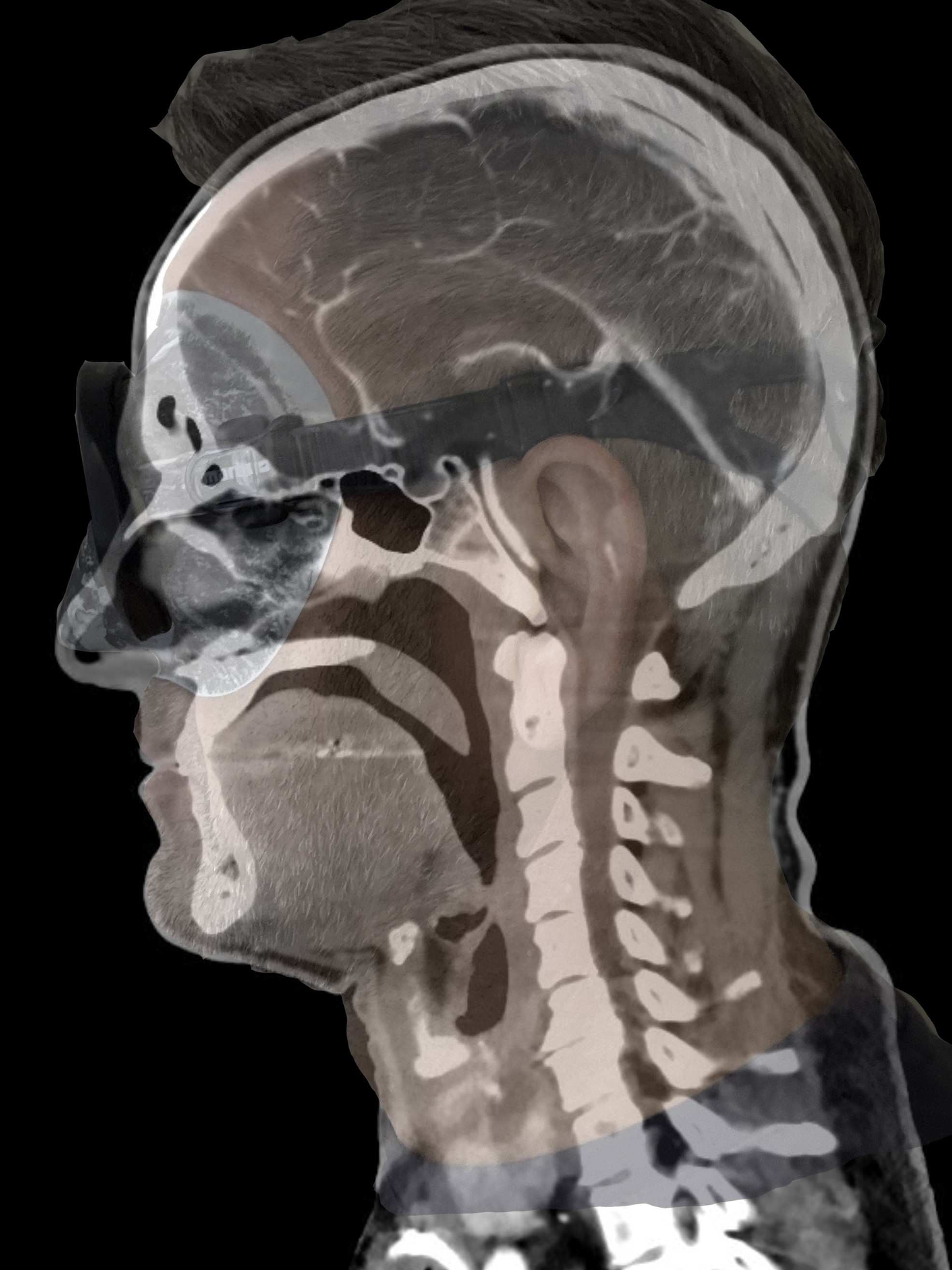
Freediving snorkel
A snorkel is essential if you want to be able to float on the surface of the water in a relaxed prone position and breathe freely. Freediving snorkels are often made of flexible plastic tubes and are usually made of a softer material. The mouthpiece should be flexible so that the snorkel can be worn comfortably on the left or right. Many freedivers have one ear, which is more challenging when equalising pressure. It is advisable to switch the snorkel to the other side to avoid putting additional pressure on the stressed ear. The snorkel is placed under the back of the mask strap so that it does not swing back and forth when freediving. You can throw away the plastic clips that come as standard with some snorkels: These are intended for snorkellers or SCUBA divers.
Freediving masks and snorkels are comparatively inexpensive and extremely handy, ideal for any diver who wants to be ready anytime and anywhere. Freediving masks and snorkels fit easily into your luggage and are perfect not only for diving holidays, but also for spontaneous water adventures.
Noseclips
Discover comfortable noseclips in appealing colours and designs for every freediver's nose - fit and comfort guaranteed! Fast shipping from Switzerland.
Noseclips in the pool
Noseclips in combination with swimming goggles are the ideal combination for pool training, whether static or dynamic. The skin of the cheeks is wet and this triggers the Mammalian Diving Response (MDR). In dynamic, swimming goggles and nose clips are more hydrodynamic than diving goggles and you can equalise pressure without disturbing your hydrodynamics.
Noses are as different as we humans are, which is why there is no single noseclip that fits all freedivers. Some models slip off again and again, while others cause pain after a short time. If you have more than one model in your diving bag, you can hang two noseclips around your neck and change them during training.
If you are short-sighted but still want to be able to see in the pool, I recommend swimming goggles with corrective lenses. You can order these online in 0.25 dioptre increments, separately for left and right, e.g. from Fielmann . Swimming goggles combined with a noseclip are indispensable companions for my indoor pool training!
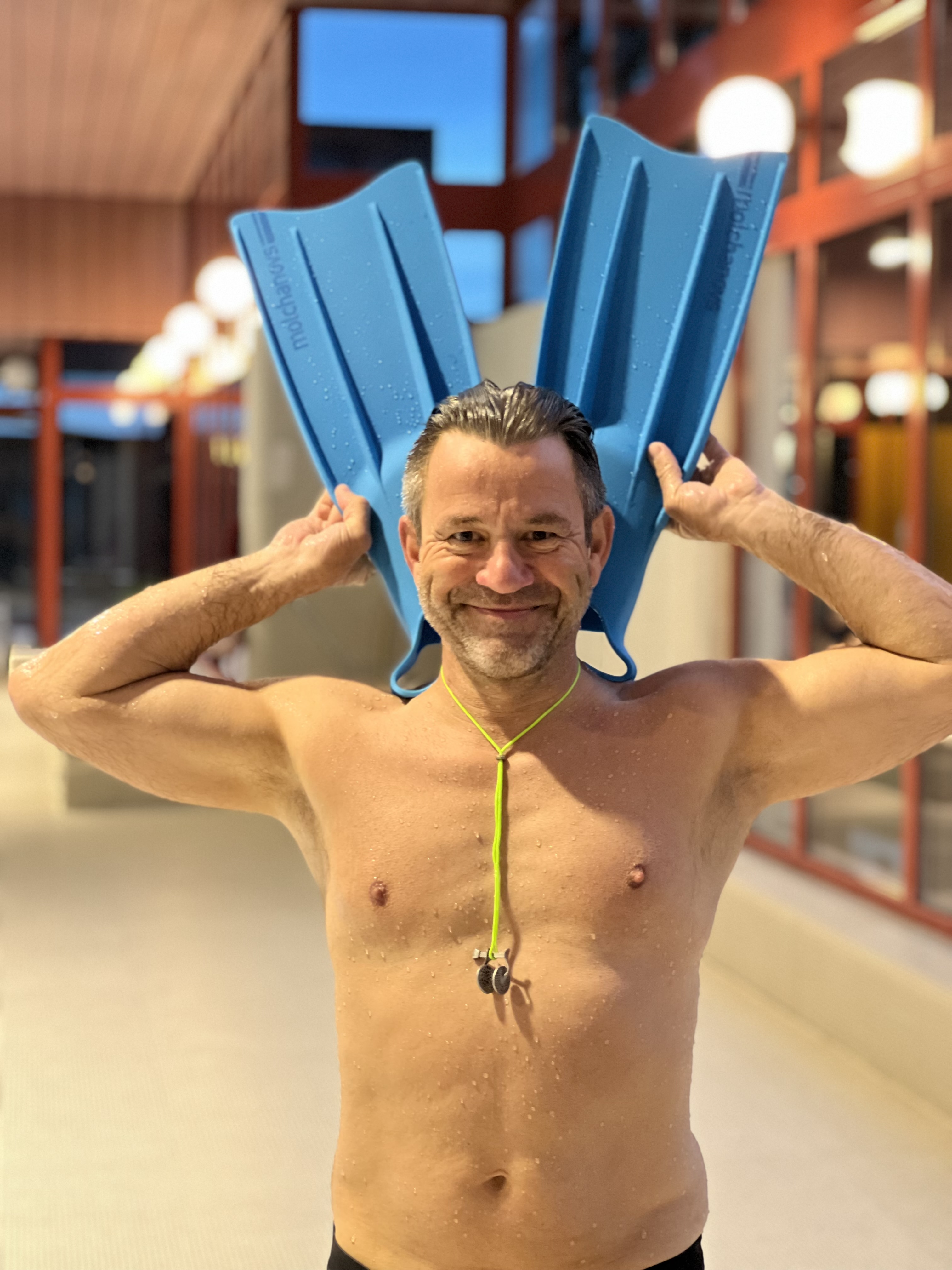
Noseclip in open water
In open water, noseclips in combination with fluid goggles allow hands-free pressure equalisation during free immersion (FIM) or constant no fins (CNF). The Noseclip allows you to equalise the pressure of the middle ear hands-free.
Especially in our colder waters, pressure equalisation is a challenge for many freedivers. If you are diving in the lake with a nose clip, you need to be sure that no air bubbles escape from your nostrils during pressure equalisation. If this is the case, you will not be able to build up the necessary pressure to open the Eustaschian tube. For this reason, your nose clip must sit really firmly on your nose and pinch the nostrils shut. Yes, it hurts, but if you wait a few seconds, the pain disappears and you can press the nose clip closed with one more click. Now wait again until the pain subsides and give it another click! Now your nose clip is really tight and the pressure equalisation works like clockwork!
Fins
Fins for beginners to monofins for competition athletes. Specialising in freediving, I offer equipment that takes you deeper and further.
Fins
How can you recognise a freediver? As soon as you see the long, slim fins, everyone realises: this is not a SCUBA diver, but a freediver getting ready to enter the water! Freediving fins are designed for optimum performance. Maximum propulsion with minimum air consumption!
Bi-fins
A fin on each foot is how every freediver starts their journey underwater. The gentle, continuous up and down of your legs allows you to glide effortlessly through the pool and swim your laps. A clean technique is crucial: the knees remain largely straight and the movement is from the hips. Bi-fins (also known as stereo fins) are always worn with neoprene socks to prevent chafing of the skin. Exceptions are competition fins with customised foot sections, which are worn barefoot and with shampoo as a lubricant.
Monofins
With a monofin on your feet, you'll awaken the marine mammal in you, or you'll feel like a long-time skier standing on a snowboard for the first time. The movement sequence is demanding, but after a day of training and regular practice, a new world will open up to you. With just one powerful movement, the body glides almost endlessly and relaxed through the water. Buying a monofin is a matter of trust: if you are already investing money, then you not only want a monofin that looks good and fits perfectly, but also one that guides you through the water as if on rails and converts your power into propulsion without loss.
Choice of material
The variety of freediving fins is remarkable. Plastic models are inexpensive, but can be too hard, especially for beginners. A silicone fin is often a good choice to strengthen the supporting muscles in the ankle joint. Fins made of glass fibre reinforced plastic (GRP) offer very good performance and flexibility, but come at a price. The ultimate in performance is offered by carbon fibre fins (CFRP): on the feet of an experienced freediver, they unfold their full performance potential.
New or used
I regularly have fins on offer from my diving school that have been little used and are practically as good as new. Most of the fins have only been tried on or worn a few times in the pool or lake: a good opportunity to get a fin for little money!
From beginners to experienced freedivers - we have the right fin for every adventure. Immerse yourself in the boundless beauty of the underwater world!

Neoprene
Open-Cell wet suits, socks, neoprene gloves from the specialist for freediving in Switzerland. Order now and the day after tomorrow with you under water.
Open-cell neoprene freediving wetsuits, socks and gloves
What are open-cell wetsuits, socks and gloves made of? Neoprene is a synthetic rubber (neoprene on Wikipedia) and provides perfect insulation for your body with its countless trapped gas bubbles. Just 5mm of neoprene material between your skin and the water allows you to dive comfortably even in the depths of winter in the lake or between ice floes.
What is open-cell neoprene?
Freediving suits are usually open-cell on the inside. This means that the neoprene has been cut open lengthways (split) and the surface consists of thousands of small, cut gas bubbles. These act like suction cups on your skin and ensure that cold water does not constantly get between the suit and your skin. However, to be able to put on an open-cell suit, you need to create a film of soap between your skin and the suit. In the PADI Freediver Course or in the PADI Basic Freediver Course I will teach you how to put on and take off your suit with the help of soapy water.
Which size for freediving suits
A neoprene diving suit should be as flexible as possible and must not restrict your upper body, otherwise it will hinder your breathing and arm movement. Because we are all built differently, you can also buy jackets and trousers in different sizes from me. I can estimate the right size for you based on your height and weight. However, it is better if you come to me by appointment and try on the wetsuit. Bring your swimwear with you and you can try on the open-cell suit with soapy water in my bathroom.
New or second-hand suits?
You can buy open-cell wetsuits, socks and gloves from me as new, but you can also buy used open-cell wetsuits from my diving school. The wetsuits have only been worn on 2-3 weekends, so they are practically new and I wash them with special neoprene detergent. You get a practically new suit for little money and I always have new material in my diving school.
Barefoot or open-cell freediving socks
Never wear your fins barefoot, always wear socks: this way you avoid sore spots even during longer training sessions.
Freediving gloves
Wear gloves to protect your hands from the cold and sore spots when pulling up the rope. Make sure that you have a good grip on your nose despite wearing gloves so that you can close your nostrils tightly when equalising the pressure.
Bags
Pack your gear in our freediving bags and backpacks: Your gear deserves simply the best. Space and quality meet comfort! 🎒
Diving bags and rucksacks
Diving bags and rucksacks for transporting your diving gear from home to the car and from the car to the dive site. Once your diving gear is dry, you can easily store it in your diving bag or diving rucksack. That way, nothing will be forgotten on your next diving adventure!
Waterproof material
Diving bags and rucksacks should be waterproof so as not to get you, your fellow travellers or your car wet after training. A good diving bag is completely waterproof and has a drain valve so that the accumulated water can be drained easily.
Diving backpack
A diving rucksack is also ideal for travelling to training sessions by bike or public transport. Why not pack your freediving equipment in your diving rucksack on your next hike and explore the bottom of the mountain lake?
Diving bags and rucksacks will last longer if you carry your weight belt separately: The concentrated weight of your weight belt in one place in the bag makes it uncomfortable to carry and puts a strain on the material and seams.
Lead belts and weights
Order Lead belts and weights in the specialized freediving webshop in Switzerland: Order now and you'll be diving the day after tomorrow!
Archimedes' Principle
You might remember from school lessons the Archimedean Principle or the Law of Archimedes? It says that a body immersed in water receives a buoyancy equal to the weight of the displaced water. You can read this in detail here: Archimedes Principle on Wikipedia.


An Example of the Archimedean Principle
A freediver weighs 80kg, so if it is completely immersed in water, a force corresponding to the weight of 80kg pulls down (actually, it is 784 Newtons, because forces are measured in "Newtons"). His body displaces 85 litres of water and thus acts on him an upward force equivalent to 85kg (833 Newton). Thus, the diver must add at least 5kg of lead in order to be able to dive underwater without exertion.
The same diver from the previous example wants to be neutral (or slightly negative) at the bottom of the pool in the pool. He still weighs 80kg, but since his rib cage has already lost its circumference at 1.5 bar ambient pressure, he displaces only 83 litres of water. Its buoyancy corresponds to 83Kg and thus 3Kg of lead is enough to be able to lie comfortably at the bottom of the basin.
The diver freezes and puts on his 5mm suit. The diver now weighs 81 kilograms with his suit. Just below the surface, thanks to the 5mm layer of neoprene on his body, he is now displacing 88 liters of water. So to be neutral on the surface, he has to put on 7kg of lead. At the bottom of the pelvis, on the other hand, not only is its rib cage compromised, but also the air bubbles in the neoprene have lost 25% of their volume. So it now displaces 86 litres of water and is markedly negative with its 7kg of lead.
What does the Archimedean Principle mean for freedivers in the pool
If you wear a wetsuit in the pool, you have to balance the buoyancy with a lot of lead if you want to dive dynamically at a depth of about 1m. With thick suits (5mm jacket and trousers) the amount of lead required is so large that it is hardly possible to be stable at a depth of 1m. Even the smallest differences in depth have a strong effect on the compression of the suit and the diver drifts to the surface or sinks to the bottom.
Conclusion: Dynamic in the pool best only in swimwear. If it is too cold for you, wear a thin (1mm or 1.5mm) suit or a maximum 3mm thick suit jacket without trousers.
What does the Archimedean Principle mean for freedivers in open water?
In the open water, most freedivers aim for a Neutral Lift at depth of 8-12m. This is achieved in a 5mm suit with about 3-4kg of lead. If you have a 1/2kg piece of lead in the buoy, you can adjust your weight in 500g increments, which is usually enough. Do a surface buoyancy test in the open water first: If you breathe in and out normally while standing in the water column, the water line should be about the level of your eyes. If you breathe out completely, you may sink down to about your forehead but never start to sink further! If you don't have enough lead, your duck dive needs to be very efficient and the descent is long and exhausting. If you're overweight, you won't be able to relax on the surface and run the risk of not drifting on the surface in the event of a blackout!
How many lead weights do you need in the pool?
In order to be neutral in the pool at a depth of about 1m or in the open water at about 10m, a diver needs weight in the form of lead pieces, which are carried on a harness on the lower abdomen or in the form of neck lead. Only with the right amount of lead, one can dive comfortably in the pool and use all the power of the fins for propulsion. I, 173cm tall and 80kg, need 2kg of lead in the pool in swimming trunks, with 3mm suit jacket 4kg. With 3mm suit jacket and trousers approx. 6kg
How much lead in open water?
In open water, the right amount of lead is not only important to be able to submerge and submerge with as little energy as possible (and thus oxygen consumption), but it is also decisive for safety: only so much lead on the body that even in the exhaled state one does not begin to sink at the surface! In fresh water I use 4Kg with 5mm suit and in salt water 5Kg lead.
Lead in the sea?
As a rule of thumb, 1 kg of lead per mm of neoprene thickness, which one carries. Also here always do a buoyancy test first, because salt water has a different density depending on the area.
How do you wear a lead belt?
Most freedivers, and especially female freedivers, wear the lead belt too high at the waist. The result, especially when you dive upside down, is that the lead belt slides up towards your chest. A freediving lead belt made of rubber or silicone is worn at the level of your bladder, which is very low. Women with a slender waist can use a crotch strap to prevent the lead strap from slipping upwards.
Lobster Weight
Lobster Weight 🦞 and Squid Weight 🦑 take your performance to the next level. Fast direct shipping from Switzerland and Germany now!
What are Lobster Weight, Squid Weight and Lobster Belt Weight?
Lobster Weight, Squid and Lobster Belt Weight are weight systems for freedivers looking for maximum performance, flexibility and quality. The various weight systems are the perfect companion for training and competitions in the pool and open water. The best freedivers worldwide use Lobster Weight products to maximise their performance. While the Lobster Weight is already widely used and appreciated by many freedivers in Switzerland, Germany and Liechtenstein, the Squid Pro Neck Weight and the Lobster Belt Weight are not yet so well known here: Be the first in your training group to discover the benefits of these products!
freedive-thurgau.ch
My webshop for customers in Switzerland and Liechtenstein.
freedive-konstanz.de
My webshop for customers in Germany and the EU. The offer in the German Webshop is being continuously expanded.
Your Advantages
If you order from freedive-thurgau or freedive-konstanz, you will receive Lobster Weight, Squid and Lobster Belt Weight delivered directly to your home a few days after ordering without the high surcharges for postage, customs duty and VAT. If you buy your Lobster Weight, Squid or Lobster Belt Weight through me, you will also receive a 2-year warranty on production defects, and not just 1 year, as is the case when ordering directly from the manufacturer in Moldova. I am a freediver myself, a long-time user of Lobster Weights and will be happy to advise you before you buy and will also be there for you afterwards.
Learn more about Lobster Weight Products
Learn more about Lobster Weight Products on my specialized websites:
Torches
Here you’ll find dive lights and strobes for all applications in freediving and spearfishing.
Buoys
Spearfishing
What is Spearfishing?
Spearfishing, also known as underwater hunting or harpooning, is a traditional method of catching fish. Although spearfishing is banned in Switzerland, it has a long tradition in many cultures, especially in the Mediterranean region of Europe. Popular destinations for spearfishing include Italy, France, and Croatia.
Pros and Cons of Spearfishing
Spearfishing is controversial. The seas are considered overfished, and like hunting, some people condemn the killing of animals for sport. On the other hand, fish is a valuable food source, and spearfishing is the most eco-friendly and sustainable method of catching fish. There is no unwanted bycatch, and ecosystems are not excessively strained, unlike commercial fishing with trawl nets. Because the prey is selected before the shot, no undersized animals are harmed.
How Difficult is Spearfishing?
Many people, especially SCUBA divers, underestimate the difficulty of spearfishing. While fish generally show little fear of divers and approach out of curiosity, marine creatures behave completely differently towards spearfishers. Fish are constantly surrounded by predators and have learned through evolution to distinguish between peaceful fish and predators. They can also sense whether a predator is approaching with hostile intent or behaving passively.
Spearfishing Equipment
Before embarking on your spearfishing adventure and hunting for a substantial sarago or bass, it is important to have the right equipment. You will need one or preferably two spearguns: a longer speargun about 100-120 cm in length for hunting in open areas, and a shorter speargun of 70-90 cm for shooting fish in caves and rock crevices. A knife is necessary to quickly and painlessly kill the fish after the shot, as the shot is rarely immediately fatal. A fish stringer is used to attach your catch to your weight belt. A flashlight helps to spot fish in dark caves.
You can also use an old, worn-out freediving open-cell wetsuit for spearfishing. However, hiding behind rocks and lying on the seabed puts a lot of strain on the material, and your old suit will soon have holes and tears. It is worth getting a special spearfishing suit in camouflage colors, with a chest pad and possibly a urine relief system (a neoprene tube for urinating during long spearfishing sessions).
The rest of the equipment
Apparel
Discover our exclusive clothing collection for freedivers that combines comfort and style. Whether it’s T-shirts or hoodies, our casual wear is perfect for those who want to show their passion for freediving even on land. Each garment is made from high-quality materials that are not only comfortable to wear but also durable, functional, and eco-friendly.
Our designs are inspired by the underwater world and offer a stylish way to express your connection to the sea, whether you’re at the beach, going about your daily life, or engaging in leisure activities.
With our freediving clothing, you’ll always be well-dressed – whether you’re relaxing after a dive or planning your next adventure. Our collection features a wide range of sizes, colors, and styles that are perfectly suited to the needs of freedivers. Thanks to breathable fabrics and a comfortable fit, you’ll stay cool and comfortable even in warmer weather. Choose from our popular T-shirts, casual hoodies, and accessories to complete your look.
Dive into the world of freediving – even on land – with our unique clothing collection.
Freediving Computer
Freediving Computer: Your wrist companion above and under water.⏰Order now and delivery in the next few days by Swiss Post!
What can a Freediving Computer do?
With a freediving computer on your arm, you know how deep your last dive was and your dive time. The dive computer usually starts measuring the dive time at a depth of around 1 metre and switches to surface mode at a depth of around 0.5 metres. On the surface, it measures the time elapsed since surfacing. The surface time tells you the earliest time you can descend again (you should always observe a minimum surface interval of 2 minutes. Even more for deep dives.).
Most models allow you to set depth alarms, i.e. the watch beeps when a predefined depth has been reached, e.g. to remind you to assume the freefall position. However, when diving in a lake with a 5mm headgear, the beeping of most models is easy to ignore: In this case it is advisable to wear a second computer, programmed for the depth alarms, in the hood. Most computers will also display the water temperature (usually the lowest temperature measured, i.e. the one at depth) and the current time.
Can it replace a logbook?
All models allow you to scroll through past diving sessions and dives. Many dive computers can be connected to your Windows or Apple computer with a special cable (available as an accessory) to read out the dive data. Personally, I keep a paper logbook and have survived generations of dive computers and operating systems (but I'm also a boomer!).

Accessories
Accessories for Safe and Comfortable Diving
Welcome to the Accessories category, where you will find a carefully selected collection of diving equipment that doesn't fit into our other categories. My goal is to offer you the best freediving accessories on the market to make your diving experiences as safe and enjoyable as possible.
In this category, you will find a variety of high-quality products from different manufacturers. Each product has been carefully selected to meet my customers' expectations.
An important aspect of our Accessories category is the continuous expansion of my offerings. I am always on the lookout for the latest innovations and developments in the field of freediving to ensure that you always have access to the best and most modern equipment. Therefore, it is worth checking back regularly to discover the latest additions. We also place great emphasis on comprehensive advice. If you have any questions about a particular product or are unsure which accessory best suits your needs, our experienced team is here to help you make the right choice and complement your equipment optimally.
My range of accessories is designed to provide you with the best conditions for unforgettable dives. Whether you want to expand your existing equipment or replace individual parts, you will definitely find the perfect accessory with me. I am delighted to accompany you on your journey and offer you the best products for your freediving experience.
Visit our Accessories category regularly to avoid missing any new items and to always be equipped with the best gear. Your perfect freediving experience starts here!
Bargain
Not everyone can or wants to spend a fortune on freediving equipment. That’s why we’ve curated a selection of special offers, used items, and clearance models from our webshop in this category. All items are in excellent condition and ready for immediate use. Discover great opportunities to acquire high-quality equipment at attractive prices, without compromising on quality. Dive into our offers and take advantage of fantastic deals!


